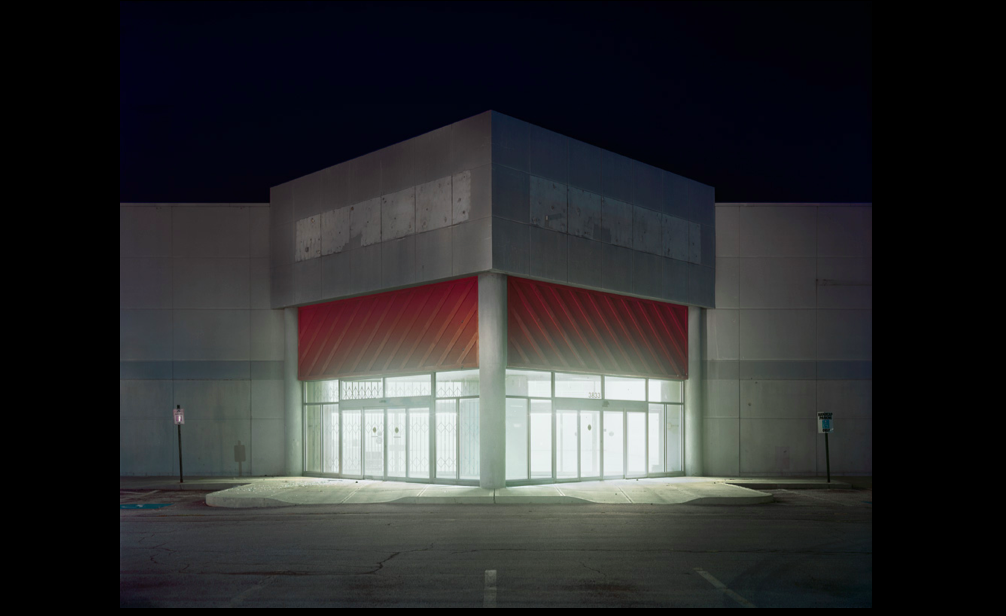
Screenshot, "Pep Boys, 2009," Dark Stores, Brian Ulrich
Brian Ulrich's work focuses on the range of our experience with scenes of consumer culture. In one series, aptly titled Retail, Ulrich documents the familiar settings of bustling grocery stores, well-lit mega-chains including Target, and crowded malls. That series is populated with all types of American consumers. However, in a study in contrast, Ulrich has put together a series of photographs of deserted malls, vacant storefronts, and boarded-up restaurants entitled Dark Stores.
Recent comments
2 years 29 weeks ago
2 years 44 weeks ago
2 years 44 weeks ago
2 years 50 weeks ago
3 years 4 weeks ago
3 years 4 weeks ago
3 years 4 weeks ago
3 years 6 weeks ago
3 years 6 weeks ago
3 years 6 weeks ago